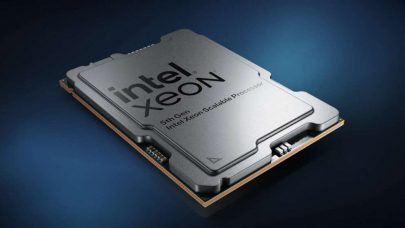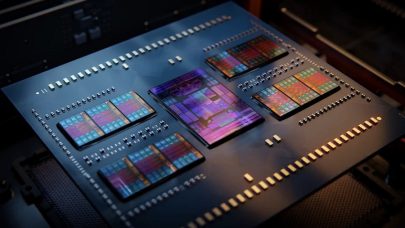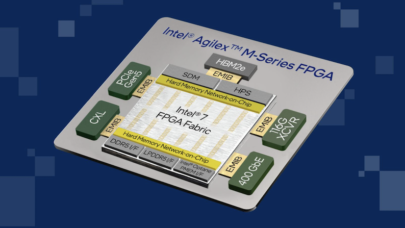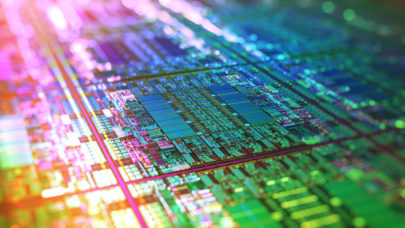
Intel Won’t Have a Xeon Max Chip with New Emerald Rapids CPU
December 14, 2023
As expected, Intel officially announced its 5th generation Xeon server chips codenamed Emerald Rapids at an event in New York City, where the focus was really o Read more…

Aurora the Survivor: Exascale Supercomputer Arrives After Eight Years of Doom
November 13, 2023
Many products were sacrificed in the eight years it took to bring the Aurora supercomputer to life. Nonetheless, anticipation for the second U.S.Exascale system Read more…

Annual GPU Upgrades: Nvidia’s Plan for Faster Chips
October 16, 2023
If you are waiting in a giant line for Nvidia's H100 GPUs, be advised that the next-generation H200 chip is already on its way. The GPU maker earlier this mo Read more…

Semiconductor Companies Create Building Block for Chiplet Design
January 24, 2023
Intel's CEO Pat Gelsinger last week made a grand proclamation that chips will be for the next few decades what oil and gas was to the world over the last 50 years. While that remains to be seen, two technology associations are joining hands to develop building blocks to stabilize the development of future chip designs. The goal of the standard is to set the stage for a thriving marketplace that fuels... Read more…

AMD’s Genoa CPUs Offer Up to 96 5nm Cores Across 12 Chiplets
November 10, 2022
AMD’s fourth-generation Epyc processor line has arrived, starting with the “general-purpose” architecture, called “Genoa,” the successor to third-gen Eypc Milan, which debuted in March of last year. At a launch event held today in San Francisco, AMD announced the general availability of the latest Epyc CPUs with up to 96 TSMC 5nm Zen 4 cores... Read more…

Intel’s New Programmable Chips Next Year to Replace Aging Products
September 27, 2022
Intel shared its latest roadmap of programmable chips, and doesn't want to dig itself into a hole by following AMD's strategy in the area. "We're thankfully not matching their strategy," said Shannon Poulin, corporate vice president for the datacenter and AI group at Intel, in response to a question posed by HPCwire during a press briefing. The updated roadmap pieces together Intel's strategy for FPGAs... Read more…

Intel Says UCIe to Outpace PCIe in Speed Race
May 11, 2022
Intel has shared more details on a new interconnect that is the foundation of the company’s long-term plan for x86, Arm and RISC-V architectures to co-exist in a single chip package. The semiconductor company is taking a modular approach to chip design with the option for customers to cram computing blocks such as CPUs, GPUs and AI accelerators inside a single chip package. Read more…

AMD Milan-X CPU with 3D V-Cache Available in Four SKUs, Up to 64-Cores
March 21, 2022
Following their debut launch in November, AMD Epyc processors with 3D V-Cache technology, codenamed Milan-X, are now generally available from major system-makers as well as from cloud provider Microsoft Azure. Available in four SKUs and ranging from 16- to 64-cores, the new processors feature 768 megabytes of L3 cache... Read more…

- Click Here for More Headlines

Whitepaper
Transforming Industrial and Automotive Manufacturing
In this era, expansion in digital infrastructure capacity is inevitable. Parallel to this, climate change consciousness is also rising, making sustainability a mandatory part of the organization’s functioning. As computing workloads such as AI and HPC continue to surge, so does the energy consumption, posing environmental woes. IT departments within organizations have a crucial role in combating this challenge. They can significantly drive sustainable practices by influencing newer technologies and process adoption that aid in mitigating the effects of climate change.
While buying more sustainable IT solutions is an option, partnering with IT solutions providers, such and Lenovo and Intel, who are committed to sustainability and aiding customers in executing sustainability strategies is likely to be more impactful.
Learn how Lenovo and Intel, through their partnership, are strongly positioned to address this need with their innovations driving energy efficiency and environmental stewardship.
Download Now
Sponsored by Lenovo
Whitepaper
How Direct Liquid Cooling Improves Data Center Energy Efficiency
Data centers are experiencing increasing power consumption, space constraints and cooling demands due to the unprecedented computing power required by today’s chips and servers. HVAC cooling systems consume approximately 40% of a data center’s electricity. These systems traditionally use air conditioning, air handling and fans to cool the data center facility and IT equipment, ultimately resulting in high energy consumption and high carbon emissions. Data centers are moving to direct liquid cooled (DLC) systems to improve cooling efficiency thus lowering their PUE, operating expenses (OPEX) and carbon footprint.
This paper describes how CoolIT Systems (CoolIT) meets the need for improved energy efficiency in data centers and includes case studies that show how CoolIT’s DLC solutions improve energy efficiency, increase rack density, lower OPEX, and enable sustainability programs. CoolIT is the global market and innovation leader in scalable DLC solutions for the world’s most demanding computing environments. CoolIT’s end-to-end solutions meet the rising demand in cooling and the rising demand for energy efficiency.
Download Now
Sponsored by CoolIT
Advanced Scale Career Development & Workforce Enhancement Center
Featured Advanced Scale Jobs:
HPCwire Resource Library
HPCwire Product Showcase
© 2024 HPCwire. All Rights Reserved. A Tabor Communications Publication
HPCwire is a registered trademark of Tabor Communications, Inc. Use of this site is governed by our Terms of Use and Privacy Policy.
Reproduction in whole or in part in any form or medium without express written permission of Tabor Communications, Inc. is prohibited.
























